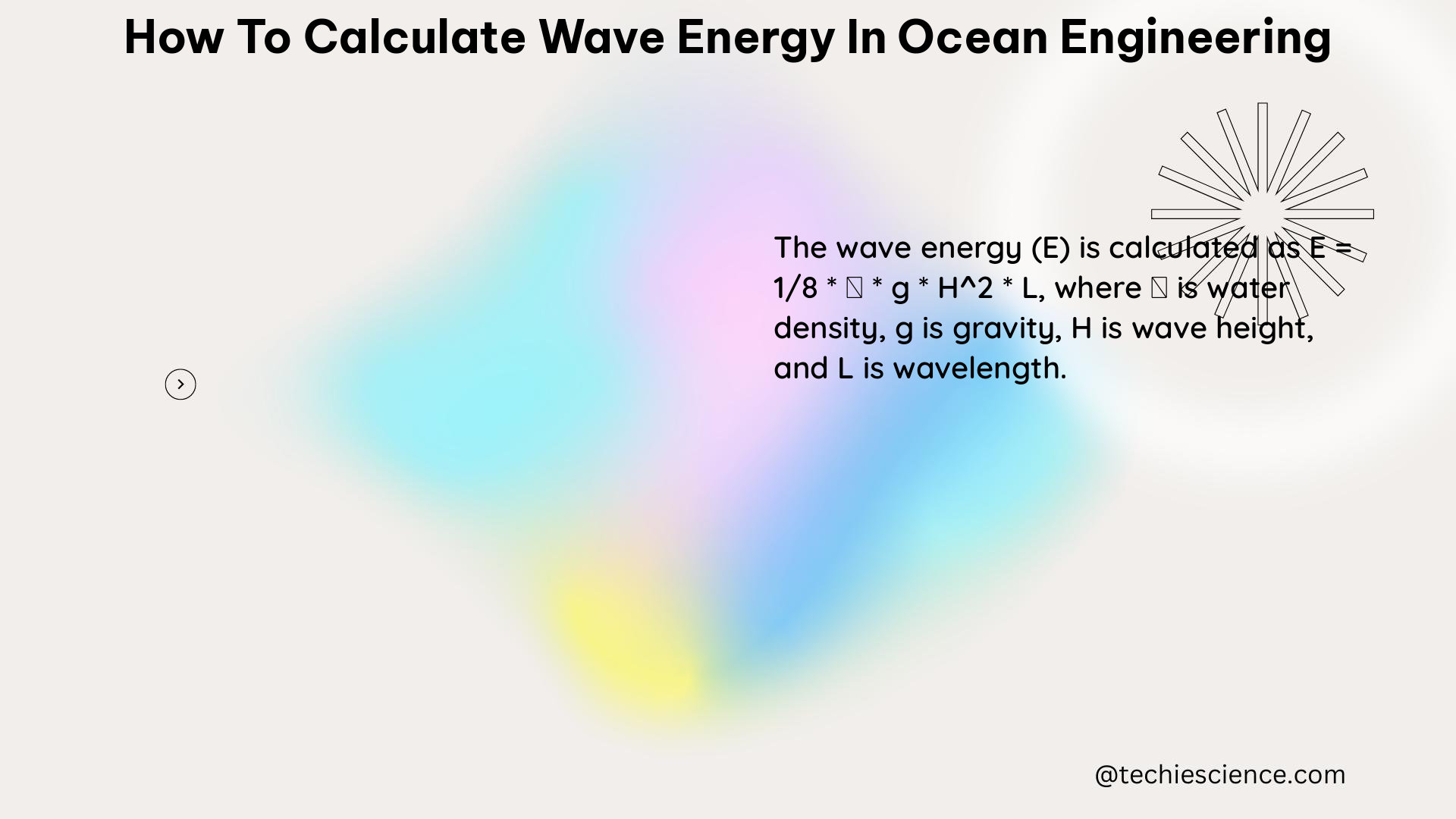In the field of ocean engineering, accurately calculating wave energy is crucial for the design, development, and deployment of efficient wave energy conversion (WEC) systems. This comprehensive guide will delve into the various parameters, methods, and formulas used to quantify wave energy, providing a valuable resource for physics students and professionals alike.
Understanding Wave Energy Parameters
Wave Height (H)
Wave height is a fundamental parameter in calculating wave energy. It represents the vertical distance between the crest and trough of a wave, typically measured in meters (m). The significant wave height (Hs) is a commonly used parameter, defined as the average height of the one-third highest waves in a sea state.
Wave Period (T)
The wave period is the time taken for two consecutive wave crests to pass a fixed point, measured in seconds (s). This parameter is essential in determining the wave energy flux (E), which represents the amount of energy passing through a unit width of the wave crest per unit time.
Wave Direction (θ)
The wave direction is the angle from which the waves are approaching, typically measured in degrees (°). This parameter is crucial in understanding the directional spectrum (S(f,θ)), which describes the distribution of wave energy as a function of frequency (f) and direction (θ).
Wave Power (P)
Wave power is the rate at which wave energy is transferred to a wave energy converter (WEC), measured in kilowatts (kW). It can be calculated using the wave height, period, direction, and the area of the WEC.
Calculating Wave Energy

Linear Wave Theory
Linear wave theory is a widely used method to derive wave parameters from raw surface elevation measurements obtained from wave measurement buoys. This theory provides a mathematical framework for understanding the propagation and characteristics of waves in the ocean.
The wave energy density (Ec) can be calculated using the wave height (H) and period (T) as follows:
Ec = 1/8ρgH^2T
where ρ is the water density (typically 1025 kg/m³) and g is the acceleration due to gravity (9.8 m/s²).
Spectral Analysis
Spectral analysis is a technique used to analyze the distribution of wave energy as a function of frequency and direction. By decomposing the wave field into its frequency and directional components, this method provides a comprehensive understanding of the wave energy spectrum.
The directional spectrum (S(f,θ)) can be used to describe the distribution of wave energy, where f represents the frequency and θ represents the direction.
Wave Models
Wave models are numerical simulations used to predict and simulate wave propagation and transformation in the ocean. These models incorporate various physical processes, such as wave generation, propagation, and dissipation, to provide accurate estimates of wave parameters.
One commonly used formula to calculate the wave power (P) for a WEC is:
P = ρgEcAfCf
where Af is the area of the WEC and Cf is the wave energy conversion efficiency.
Practical Examples and Numerical Problems
To illustrate the application of these concepts, let’s consider a practical example:
Suppose a wave energy converter (WEC) has an area (Af) of 100 m² and a wave energy conversion efficiency (Cf) of 0.4. The significant wave height (Hs) is measured to be 3 meters, and the wave period (T) is 8 seconds. Calculate the wave power (P) available for this WEC.
Given:
– Af = 100 m²
– Cf = 0.4
– Hs = 3 m
– T = 8 s
– ρ = 1025 kg/m³
– g = 9.8 m/s²
Step 1: Calculate the wave energy density (Ec)
Ec = 1/8 × ρ × g × Hs^2 × T
Ec = 1/8 × 1025 × 9.8 × (3)^2 × 8
Ec = 175.8 kJ/m²
Step 2: Calculate the wave power (P)
P = ρ × g × Ec × Af × Cf
P = 1025 × 9.8 × 175.8 × 100 × 0.4
P = 707.2 kW
Therefore, the wave power available for this WEC is approximately 707.2 kW.
Additional Resources and References
For further information and a deeper understanding of wave energy calculations in ocean engineering, consider the following resources:
References:
1. Simulating and forecasting ocean wave energy in western Canada: Link
2. Energy from Ocean Waves: Link
3. Assessment of Wave Energy Resource: Link
4. The Wave Energy Resource: Link
5. Waves in ocean engineering: Link
By understanding the key parameters, methods, and formulas presented in this guide, you will be well-equipped to calculate wave energy in ocean engineering applications, contributing to the development of efficient and sustainable wave energy conversion systems.

The lambdageeks.com Core SME Team is a group of experienced subject matter experts from diverse scientific and technical fields including Physics, Chemistry, Technology,Electronics & Electrical Engineering, Automotive, Mechanical Engineering. Our team collaborates to create high-quality, well-researched articles on a wide range of science and technology topics for the lambdageeks.com website.
All Our Senior SME are having more than 7 Years of experience in the respective fields . They are either Working Industry Professionals or assocaited With different Universities. Refer Our Authors Page to get to know About our Core SMEs.